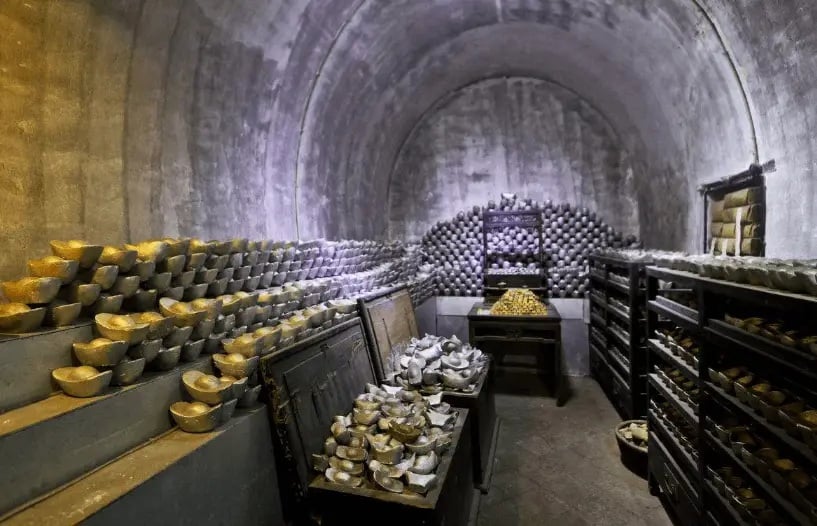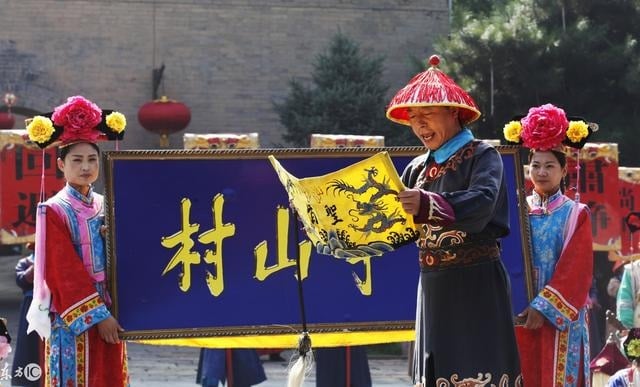In feudal times, before the existence of banks, transfer systems, or the Internet, paying salaries to thousands of officials across the country was a complex matter that required a massive logistical apparatus.
So, how did emperors of old pay their officials?

1. Officials’ salaries were not paid in money, but in “benefits”
In feudal times, the modern concept of a “salary” did not truly exist. Instead, officials were entitled to benefits, which could include goods, coins, land, or tax collection rights. These benefits were calculated according to one’s rank and achievements.
For example, a high-ranking civil official or chancellor might receive hundreds of “quan” coins per year, along with staples such as rice and fabric, and occasionally the right to collect taxes from a specific region.
2. Benefits were paid in coins, rice, silk, salt, or land, among other things
Depending on the dynasty and region, benefits could take various forms:
-
Coins (copper coins): Paid in units of “quan”. One “quan” typically consisted of 600 “van”, and the coins were often strung together for convenience. However, due to their weight and bulk, coins were not always practical.
-
Rice and staples: Officials often received monthly or annual rations of rice, enough to sustain their entire family.
-
Fabric, salt, tea, wine, and local specialties: These were common goods used by the court as gifts and benefits for officials.
-
Land and economic rights: Some officials were granted land or given the right to collect taxes and exploit resources in a particular region. This was a form of “self-sufficiency” that provided them with long-term income.
3. Distribution through specialized ministries and local systems
Salary distribution was not handled directly by the emperor but rather by specialized agencies, such as:
-
Ministry of Household (one of the Six Ministries) – Responsible for finance and distribution of the national treasury.
-
National Treasury located in the capital – Stored money, staples, and goods for the court and officials.
When it was time for salary distribution, the Ministry of Household would prepare a list of payments and then allocate the funds to local areas through provincial governors and prefects, who were responsible for distributing the salaries to lower-ranking officials.
4. Transportation by elephants, horses, carts, and boats
Due to the vast territory under their rule, transporting benefits was no easy feat. The court had to organize professional transportation teams, including:
-
Horse-drawn carts, ox-carts, and elephants for land transportation.
-
Boats and barges for river transportation, which were common in the south and areas with many canals.
These transportation teams were always escorted by soldiers to protect them from robbers.
5. A graded salary system with bonuses and penalties
Officials were classified into grades (such as “chanh pham” and “tong pham”), and each grade had a fixed benefit amount. However, honest and efficient officials could receive bonuses in the form of money, precious fabrics, or other goods. On the other hand, those who were corrupt or irresponsible could have their benefits cut, be demoted, or even have their property confiscated.

6. The Minh Mang – Nguyen period: A highly standardized salary system
Under Emperor Minh Mang of the Nguyen Dynasty, a highly standardized system of benefits for officials was established. Clear regulations specified how much money, rice, and fabric each official was entitled to, depending on their position. This helped to make the distribution process more unified and transparent.
Despite the lack of modern financial systems, the feudal dynasties had extremely efficient and effective systems for managing benefits and paying salaries. This not only demonstrated the organizational capabilities of the court but also underlined the importance of the official class in maintaining the ancient state apparatus.









